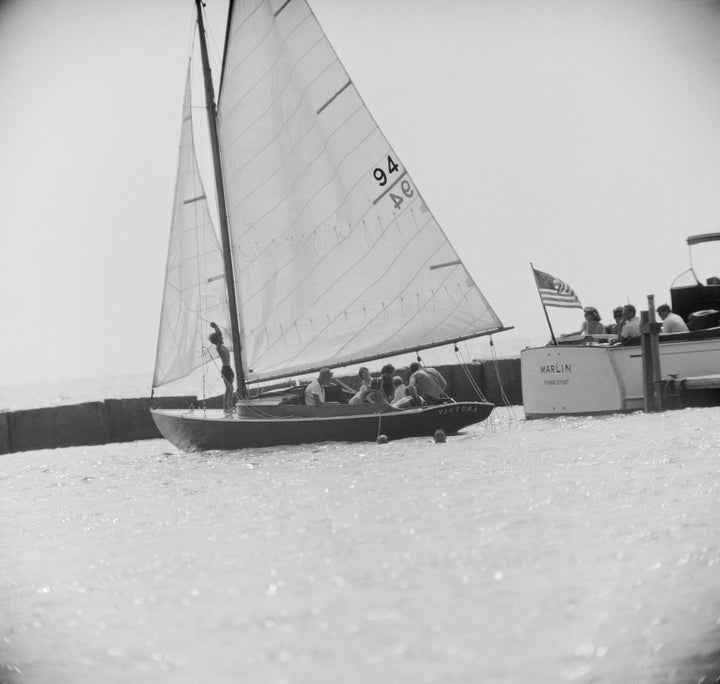
Having set the goal of landing a man on the moon, President John F. Kennedy took a direct interest in the astronauts who would get the job done. By all accounts, Jack enjoyed the personal company and conversation of his great new space mariners. He invited them to the White House and to Cape Cod, peppering them with questions. John Glenn became a family friend and a frequent visitor to Hyannis Port and Hickory Hill years after Jack was gone. Even before Glenn’s famous first orbit, while he was preparing for his flight, Jack invited him to the White House and asked detailed questions about the upcoming mission. Glenn recalled:
It was just a very cordial get-together. He just wanted to talk about what was planned on the flight, and I went into some details of what we expected to experience. In fact, later on after the flight when I came back, he recalled quite a number of these things I had said in this pre-flight meeting. . . . He evidently had remembered all the things we talked about that [preflight] day. He was interested very much in the anticipated G level during launch, what kind of sensations we expected during the launch, what kind of control we had over the booster during launch, were we actually going to drive it like we did an airplane or were we pretty much at the mercy of the guidance systems until we were in orbit. Problems of that nature — what pressures we would be operating under; what we would do if the pressure in the spacecraft failed. He was interested in real detail.
After Glenn returned, Kennedy peppered him again.
He wanted to know about things that occurred on a space flight — what I saw, what things looked like, how I felt during reentry, was it hot or wasn’t it hot, how did I feel when it banged down on the water, how did it feel when I got out. He seemed to be more interested in what had occurred on a personal experience basis rather than the scientific details of the event. What did it feel like to me as a man.
Glenn did not think Jack’s questions were rooted in concern about the feasibility of the mission. “I took it, and I think he meant it, as an interest in one human being to another — as one ‘guy’ to another, if you will, if you can put the president in that context.”
At a public ceremony, bestowing a medal on Glenn, Jack said, “Some months ago I said that I hoped every American would serve his country. Today Col. Glenn served his. ... We have a long way to go in this space race. This is the new ocean and I believe that the United States must sail on it and be in a position second to none.”
Before long, Glenn was sailing the old-fashioned way too. When he was a guest of the family at Hyannis Port, Ethel Kennedy invited him out on the Victura. The president and first lady were not present at the Cape, or so Glenn thought. “I didn’t feel qualified to take [it] out in the twenty-five- or thirty-knot wind blowing this particular day,” said Glenn, a Korean War jet fighter pilot who only months earlier orbited the planet. “Ethel said, ‘No, no, that’s all right. We’ll go sailing; we can take care of it all right.’”

“It was a blustery, blowing day,” Glenn recalled.
Well, when my family walked from the house down toward the dock with Ethel, we could see someone working on the Victura. They were wearing leather jackets and old clothes, and as we got out toward the end of the dock it became a little more apparent who these people were. It was the president and Mrs. Kennedy, rigging the sails. Any doubts I had had about sailing in that weather were somewhat alleviated.
The weather was extreme enough that Jack chose not to strain his back working the tiller. Helmsman’s duty went to Glenn’s son, Dave. “Dave had to brace his feet and really pull on the tiller to keep things under control this particular day, and the president would give him instructions as to what direction he wanted to go and exactly how to handle things.” Back and forth they went across the same harbor — the president, the astronaut and their young families — where Jack himself learned to sail, same boat, same waters, Jack’s father’s house ashore.
Excerpted from “Victura: the Kennedys, a Sailboat, and the Sea,” by James W. Graham (ForeEdge, an imprint of the University Press of New England, 2014).
